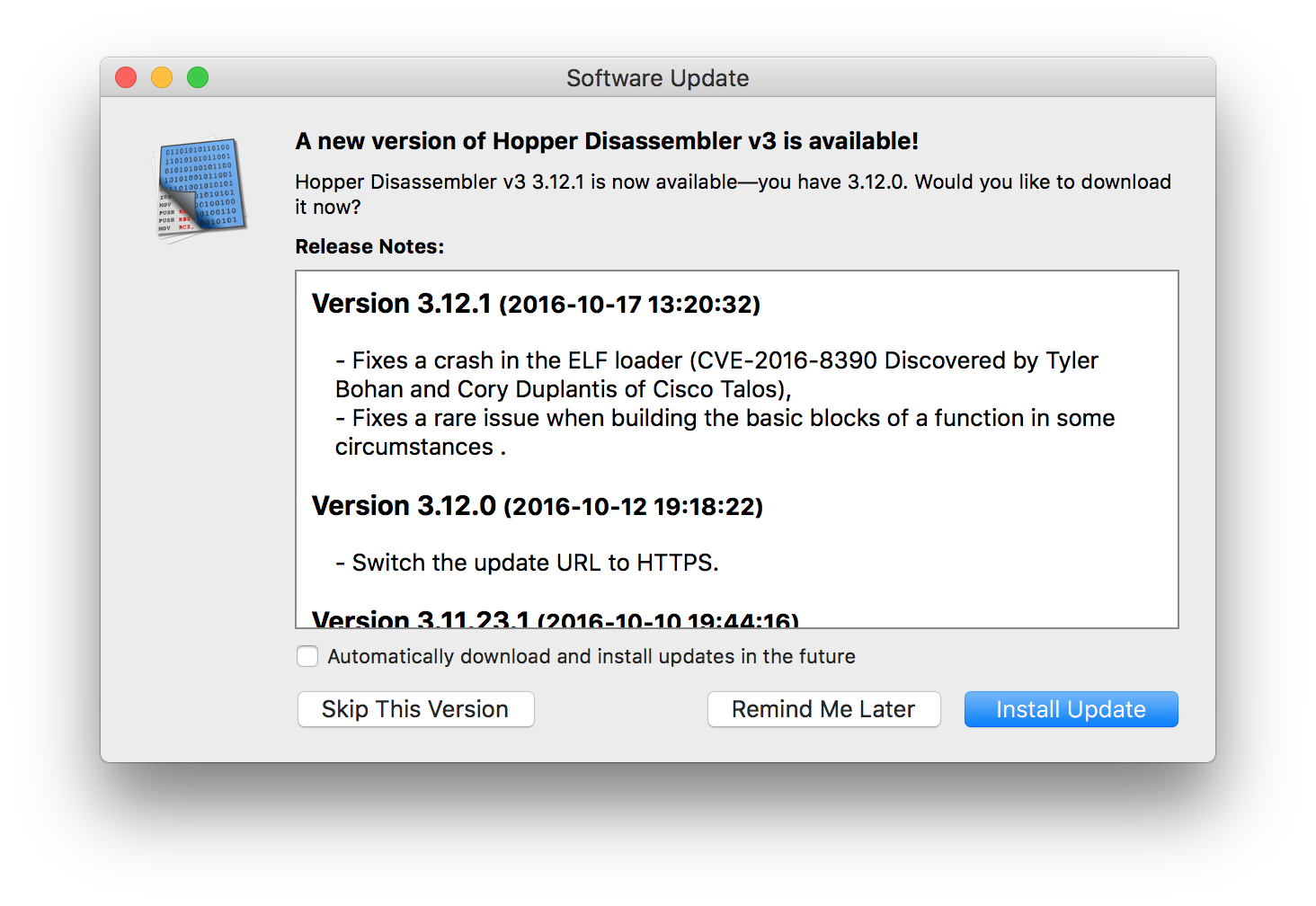

For example, the disassembler may initially not know that a section of the program is actually code, and treat it as data if the user specifies that it is code, the resulting disassembled code is shown immediately, allowing the user to examine it and take further action during the same run.Īny interactive debugger will include some way of viewing the disassembly of the program being debugged. A stand-alone disassembler, when executed, generates an assembly language file which can be examined an interactive one shows the effect of any change the user makes immediately. However, if a programmer wants to add instructions between the jump instruction and its destination, it is necessary to understand the program's operation to determine whether the jump should be absolute or relative, i.e., whether its destination should remain at a fixed location, or be moved so as to skip both the original and added instructions.Ī disassembler may be stand-alone or interactive. A disassembler cannot know what is intended, and may use either syntax to generate a disassembly which reproduces the original binary. For example, the same machine language jump instruction can be generated by assembly code to jump to a specified location (for example, to execute specific code), or to jump a specified number of bytes (for example, to skip over an unwanted branch). However, even when a fully correct disassembly is produced, problems remain if the program requires modification. If the original code uses the other choice, the original code simply cannot be reproduced at any given point in time. For example, an x86 assembler takes an arbitrary choice between two binary codes for something as simple as MOV AX, BX. This poses demands on the expressivity of the assembler. Writing a disassembler which produces code which, when assembled, produces exactly the original binary is possible however, there are often differences. Disassemblers do not handle code that varies during execution. On CISC platforms with variable-width instructions, more than one disassembly may be valid. For example, IDA allows the human user to make up mnemonic symbols for values or regions of code in an interactive session: human insight applied to the disassembly process often parallels human creativity in the code writing process. Some disassemblers make use of the symbolic debugging information present in object files such as ELF. Some disassemblers provide a built-in code commenting feature where the generated output gets enriched with comments regarding called API functions or parameters of called functions. If so, a disassembler operating on the machine code would produce disassembly lacking these constants and comments the disassembled output becomes more difficult for a human to interpret than the original annotated source code. These are usually removed from the assembled machine code by the assembler. Disassembly, the output of a disassembler, is often formatted for human-readability rather than suitability for input to an assembler, making it principally a reverse-engineering tool.Īssembly language source code generally permits the use of constants and programmer comments.


A disassembler differs from a decompiler, which targets a high-level language rather than an assembly language. ( December 2009) (Learn how and when to remove this template message)Ī disassembler is a computer program that translates machine language into assembly language-the inverse operation to that of an assembler. Please help to improve this article by introducing more precise citations.

This article includes a list of references, related reading or external links, but its sources remain unclear because it lacks inline citations.


 0 kommentar(er)
0 kommentar(er)
